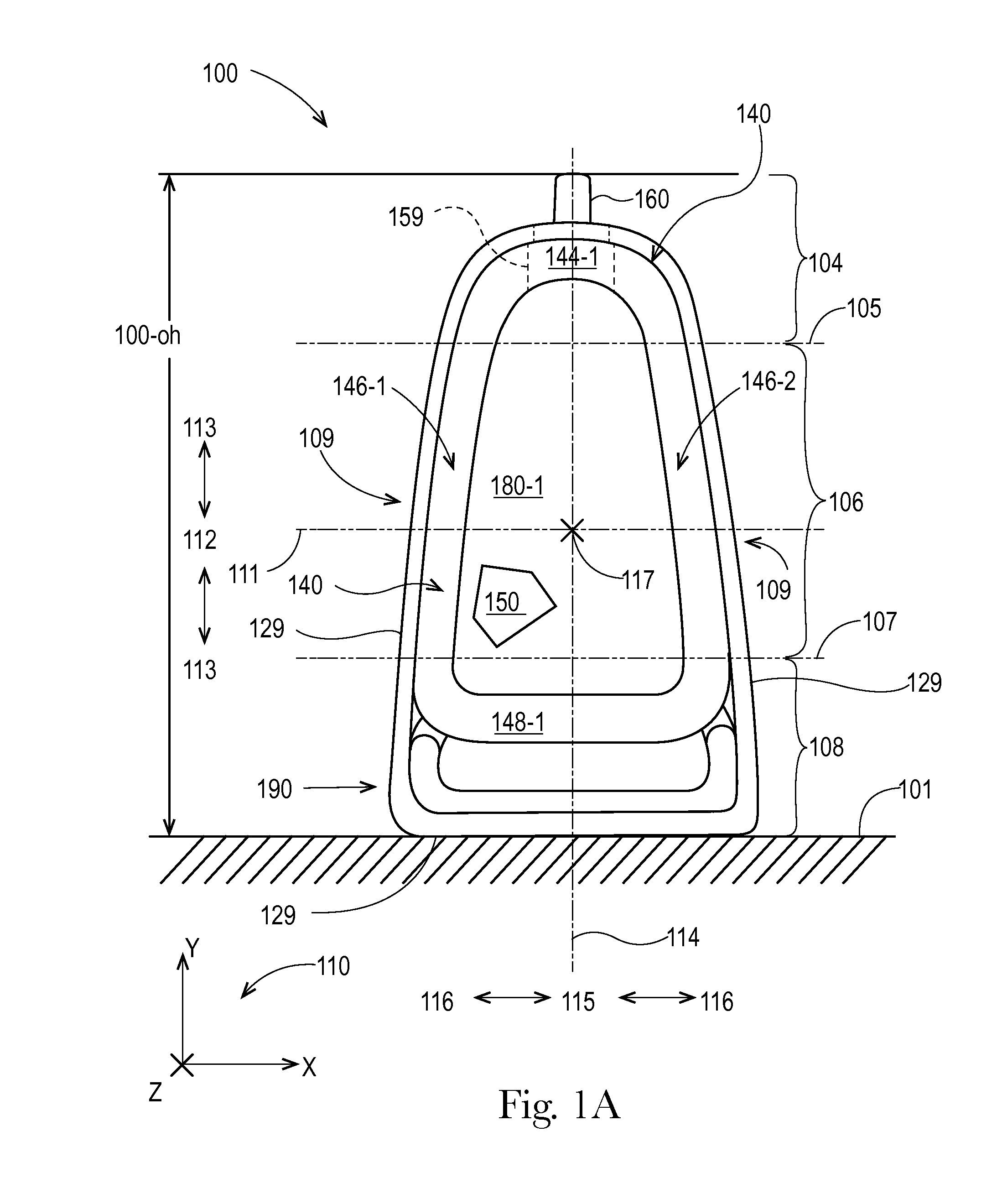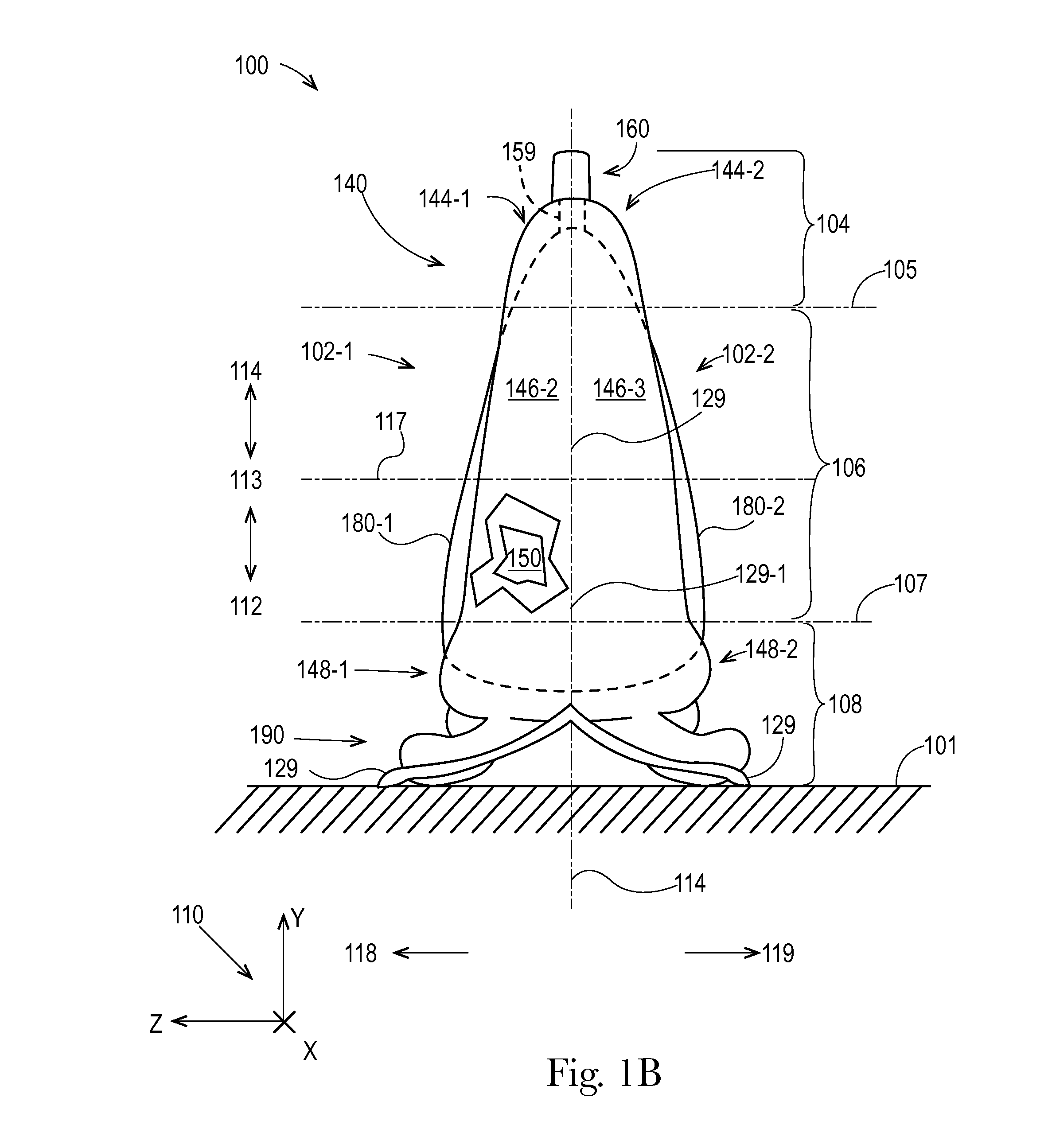Flexible Materials for Flexible Containers
- Summary
- Abstract
- Description
- Claims
- Application Information
AI Technical Summary
Benefits of technology
Problems solved by technology
Method used
Image
Examples
example 1
[0234]A first laminate having layers ordered as shown below was formed. The total film thickness was about 90 microns. The PE layers were a blend of 90% LLDPE(ZN) with 10% LDPE as determined by temperature rising elution fractionation (TREF).
Composition andOrder of the LayersThickness of the Layer (micron)FunctionPE18Sealable layerTie layerTie layerNylon~3Reinforcing layerEVOH6Gas barrierNylon~3Reinforcing layerEVA22Tie layerNylon~3Reinforcing layerEVOH6Gas barrierNylon~3Reinforcing layerTie layerTie layerPE18Sealable layer
[0235]The first laminate had the following properties:
Creep: 5 MPa; 23 C.0.4% change @ 4 hoursTensile PropertiesModulus: 870 MPa% strain at yield: 2.5%Stress at yield: 20 MPaOTR MOCON0.0104 cc / 100 in2 · day
example 2
[0236]A first laminate having layers ordered as shown below was formed. The total film thickness was about 92 microns. The PE layers were 100% LLDPE(ZN) as determined by temperature rising elution fractionation (TREF).
Composition andThicknessOrder of the Layersof the LayerFunctionPE42 μmSealant layerTie LayerTie layerNylon 618 μmGas barrier / Reinforcing layerTie LayerTie layerPE28 μmSealant layer
[0237]The first laminate had the following properties:
Creep: 5 MPa; 23 C.1.9% change @ 4 hoursTensile PropertiesModulus: 480 MPa% Strain at yield: 3%Stress at yield: 13.5 MPa
example 3
[0238]A first laminate having layers ordered as shown below was formed. The total film thickness was about 80 microns. The PE layers were mostly LDPE with a small amount of LLDPE(ZN) as determined by temperature rising elution fractionation (TREF).
Composition andOrder of the LayersThickness of the LayerFunctionPE32 μmSealable layerTie LayerTie layerEVOH12 μmGas BarrierTie LayerTie LayerPE32 μmSealable Layer
[0239]The first laminate had the following properties:
Creep Resistance: 5 MPa; 23 C.0.7% change @ 4 hoursTensile PropertiesModulus: 708 MPa% strain at yield: 2.5%Stress at yield: 15 MPa
PUM
| Property | Measurement | Unit |
|---|---|---|
| Time | aaaaa | aaaaa |
| Time | aaaaa | aaaaa |
| Time | aaaaa | aaaaa |
Abstract
Description
Claims
Application Information
 Login to View More
Login to View More - R&D
- Intellectual Property
- Life Sciences
- Materials
- Tech Scout
- Unparalleled Data Quality
- Higher Quality Content
- 60% Fewer Hallucinations
Browse by: Latest US Patents, China's latest patents, Technical Efficacy Thesaurus, Application Domain, Technology Topic, Popular Technical Reports.
© 2025 PatSnap. All rights reserved.Legal|Privacy policy|Modern Slavery Act Transparency Statement|Sitemap|About US| Contact US: help@patsnap.com



